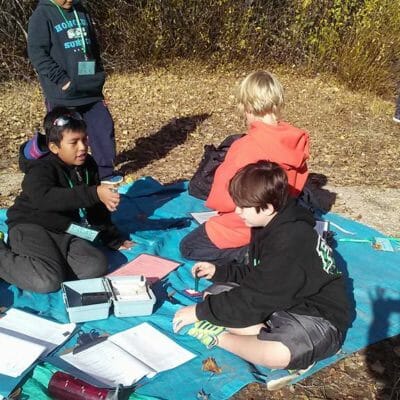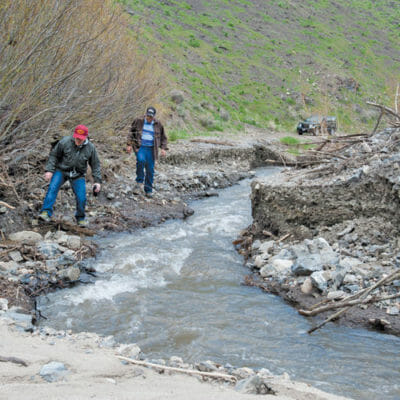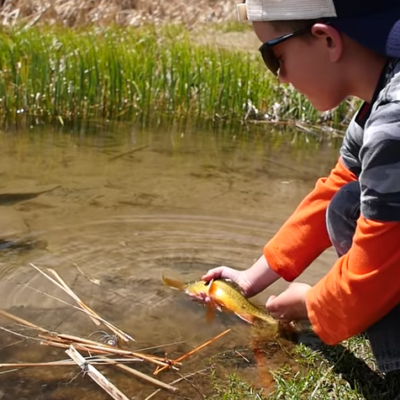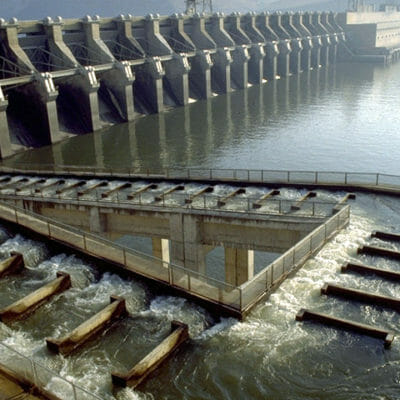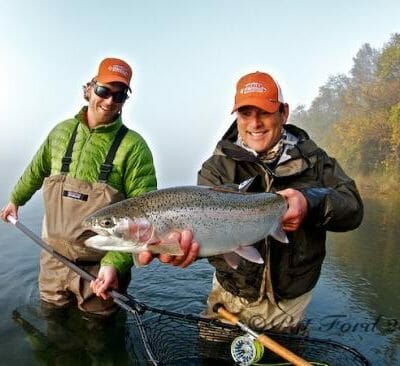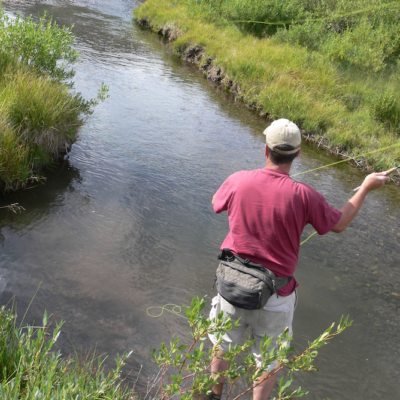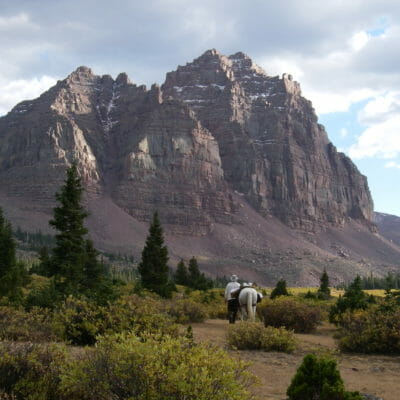Kids mixed powdery reagents into test tubes of river water then held their samples toward the light as they spun color wheels. As they matched the water’s color to a color on the wheel, they identified a measurement of pH or another water quality indicator. The scene had elements of a chemistry class, but was…
The Blaine County Commission has provided $465,000 from its Land, Water, and Wildlife Fund to assist with restoration of the Deer Creek drainage. About 70 percent of the drainage was ravaged by a lightning-sparked fire in August 2013. Severe rains immediately after the fire triggered debris flows and mudslides, clogging Deer Creek with sediment, shifting…
by Chris Hunt | February 16, 2017 | Video spotlight
Here’s one for the romantics in fly fishing—a teaser video to larger project to come about chasing native brook trout. I grew up in Colorado, fishing for introduced brookies in small headwater streams in the Rocky Mountain high country. As a kid, I had no idea that the fish I caught didn’t belong in the…
by Chris Hunt | February 15, 2017 | Uncategorized
John Day Dam on the Columbia River. A new Yale University study provides some daunting news for water and dam managers across the country: fish ladders aren’t the “fix-it” solution to fish migration over irrigation or hydroelectric dams. The study, which took place on three East Coast rivers—the Connecticut, the Susquehanna and the Merrimack—showed that…
by Chris Hunt | February 14, 2017 | Uncategorized
A New York investment firm has declared Northern Dynasty, the company that wants to dig Pebble Mine in Alaska, worthless. Pat Ford photo. It’s a good day to be a salmon or a trout in the Bristol Bay region of Alaska. Today, Kerrisdale Capital, a New York City investment firm, declared Northern Dynasty worthless. Northern…
TU’s own Tom Reed casts to native Colorado River cutthroat trout in the Wyoming Range. by Chris Hunt I got a note today from someone who read a piece by my fellow Trout Unlimited communicator, Brett Prettyman, on John Weis, a late TU volunteer from Utah who was involved in his local chapter in the…
by Chris Hunt | February 10, 2017 | Uncategorized
By Brett Prettyman Among the many thoughts running through my mind while traipsing though the wilds is one that does more than the others to clear out the chaos and clutter of every day life. “Am I the first human to stand in this place?” The fact I am even pondering the possibility means I…
